H ere I am sitting at the computer scanning the art pages of After the Snooter to prepare digital versions for the big Alec Omnibus planned for next year from Top Shelf. Just watch out it doesn't run you over. So in between scans I'm doing a bit of catching up around the blogosphere.
Jeet Heer has posted his excellent essay Guy Davenport: the writer as cartoonist online. Jeet focuses on the neglected aspects of Davenport's work, best explained in these biographical notes:
from Wikipedia:
Many of Davenport's earlier stories are combinations of pictures and text, especially Tatlin! and Apples and Pears (where some of the illustrations are of pages that resemble those of his own notebooks).
"It was my intention, when I began writing fiction several years ago, to construct texts that were both written and drawn. [ . . . ] I continued this method right through Apples and Pears [ . . . ]. The designer [of A+P] understood [my] collages to be gratuitous illustrations having nothing to do with anything, reduced them all to burnt toast, framed them with nonsensical lines, and sabotaged my whole enterprise. I took this as final defeat, and haven't tried to combine drawing and writing in any later work of fiction."
From the same source, this caught my eye:
Two sentences he wrote about Ralph Eugene Meatyard apply to himself as well: "He was rare among American artists in that he was not obsessed with his own image in the world. He could therefore live in perfect privacy in a rotting Kentucky town."
********
Charles Hatfield discusses Thierry Groensteen's The System of Comics
The book's heart is in its description of comics as networks of images: comic art, says Groensteen, "is not only an art of fragments, of scattering, of distribution; it is also an art of conjunction, of repetition, of linking together". The relations between images are, for Groensteen, what define the comics "system." The sum total of these relations he refers to as arthrology, of which he distinguishes two degrees or types: restricted arthrology, meaning the linear relations that comprise the "sequential syntagms" of a story; and general arthrology, meaning distant or translinear relations, to describe which Groensteen invokes the concept of "braiding," that is, the linking of images in networks across even the breadth of a long work such as an album or graphic novel. (As Groensteen himself suggests, one example of braiding might be the recurrence of the smiley face icon in Moore & Gibbons' Watchmen; the repetition of this image, though discontinuous, constitutes a major structuring device in that novel.) The sense of comics that emerges from all this is grand and architectonic.
I once had a taste for this kind of investigation, but now I tend to see it as being in the realm of fiction, which is to say that I enjoy reading it as i once enjoyed reading, say Le Carre's Tinker, Tailor, Soldier, Spy. I'm not sure it has more practical value than a chess game. There is a certain contingent in Art that likes the idea that all art can aspire to the abstractions we find in classical music. Thus in teaching myself the rudiments of musical composition (Only so that I can better understand a book such as Charles Rosen's The Classical Style, as well as 'sleeve notes' (as we used to call 'em)), I can get excited trying to figure out:
Compared to seventh chords, ninths play a decidedly secondary role in composition. The reason lies in the different ways the resolution of the dissonance relates to chord progression. Adding a 7th to a triad produces a dissonance that cannot resolve within the chord. Thus F in the seventh chord G-B-D-F resolves to E, a tone foreign to the G chord. Using the 7th, therefore, promotes progression to a new chord- one that contains the tone of resolution. Because the dissonance so powerfully influences harmonic direction, it is useful- indeed necessary- to think of seventh chords as a special category, bearing in mind the fact that they are really triads plus a dissonant passing tone or suspension. (from Harmony and Voice Leading by Aldwell and Schachter))
However, while all of that serves a demonstrably useful purpose, which is to say that at the end of it a graspable music may be made, I would not dare to think that comic books are discussed so seriously often enough that a new bunch of words couldn't be spontaneously coined for each and every occasion.
Furthermore, there seems to be a resistance to any terminology becoming a shared vocabulary. Is it possible to refer to 'visual-verbal balance' without feeling that one has become the physical and actual embodiment of RC Harvey, or to say 'aspect-to-aspect transition' without truly imagining that one is heading off home to a cheery supper with Ivy McCloud?
**********
A while back I dismissed Douglas Wolk's Reading Comics: How Graphic Novels Work and What They Mean with the casual 'this will do more harm than good'. A few were irked that I should comment without even reading his book. Indeed, my feeling was that the title alone had done all the damage. I took it to indicate that Wolk was conflating the whole idea of the art of 'comics' into the idiom (a very shrivelled one) of American comic books. Derik Badman, a much more prosaic and patient fellow than myself, goes through the job point by point, confirming for me that I have better things to do with my time.
His focus on the binary of “mainstream”/”art comics” is extremely problematic (including the confused overlap with mainstream/independent). On one level, I can’t imagine why the general reader would care about such things, and similarly why anyone would want to make them knowledgeable about such insider-y and useless distinctions. Just the term “mainstream” itself grates, for its illogic. But also, Wolk’s idea of “art comics” relies on his idea of style being “at least as important” as content and on the use of deliberately “ugly” art. His argument for art comics as style over content seems so indistinct. Couldn’t one easily say that the so-called “mainstream” superhero comics are an example of style over content? Wolk frequently returns to the idea of “ugly” art in comics, yet, despite his attempted forays into aesthetics (like Kant), he never makes any good claim for what “ugly” means. He says that “it’s a result of a conscious choice to incorporate a lot of distortion and avoid conventional prettiness in style.”
Labels: comics crit 1
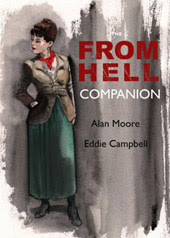
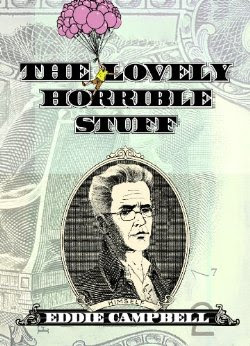

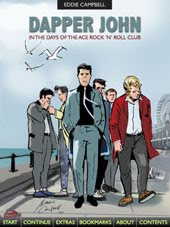
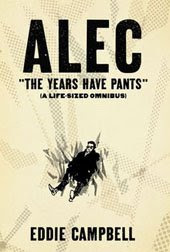
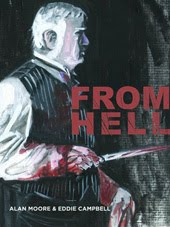
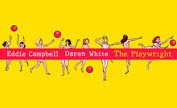
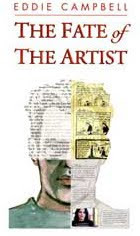

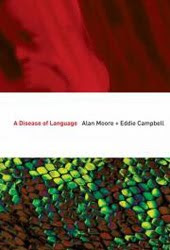
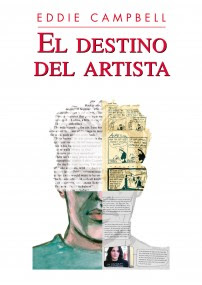
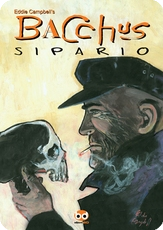
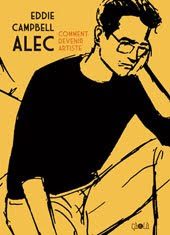

19 Comments:
Seeing as you're dipping into the murky waters of comics history & crit theory again, I can't recommend you read Adam Kern's massive history of Edo-era comicbooks, Manga from the Floating World. For reasons much too numerous and detailed to get into in a blog comment, I can assure you it will NOT make you grumpy. Here's the Amazon USA page. BTW, no Amazon.au? What gives?
thanks, Dave.
I presume you mean you CAN recommend?
It looks great. will investigate.
Eddie
Damn, the news of the forthcoming Alec Omnibus has absolutely made my week.
Hello Eddie,
You have a buyer here for the Alec Omnibus, for sure. Very glad to hear about it.
About a month and a half ago I managed to find in a store, in one of those forgotten longboxes, a copy of Bacchus Issue 34. I bought it without even thinking about it. I think I said already that the only work from you that I've read was From Hell? Anyways, besides the obvious fact of not knowing for sure everything that was going on, I've enjoyed it a lot. I'll see to pick up the two trades (vol. 2 and 3)they have in the store as soon as I can.
Best regards
Loris Z.
Any chance of a Bacchus Omnibus as well? I've been rather unlucky trying to get my hands on English volumes and I am led to believe that some are actually out of print.
Eddie, my goal of being cited, however questioningly, on your fine blog has now been reached. :)
Re: Groensteen and the high-theoretical parsing of comics form, I'll grant that some of the pleasure in this is of the same sort, or in the same ballpark, as the abstracted formal beauty of reading about chess.
But I do find value in it. For me, the value has to do with the way common words are creatively repurposed to describe something interesting about comics. Hence, it's Groensteen's idea of "braiding," not terms like "restricted arthrology," that I find most helpful. Braiding and gridding (the gerunds supplied by translators Beaty & Nguyen) are attractive metaphors that call attention to certain things about comics, whereas the passages about comics as a "spatio-topical apparatus" are harder slogging.
I was actually surprised and delighted by how much my partner in crime, Craig Fischer, was able to do with the application of Groensteen to someone else, namely Jason's comics. Leave it to Craig to find a way out of the labyrinth by using someone else's cartooning as a guide.
(Craig is the other half of the Thought Balloonists.)
Re: an Alec Omnibus, my drool bucket is ready. :)
mmm, I agree - I really like the way the word braiding sounds as a way of thinking about how panels interrelate. I am fairly sure I don't know what a syntagm might be, and will be very happy to forget the word 'arthrology' as soon as I possibly can.
Bacchus omnibus in two volumes soon after Alec.
well, that's the plan anyhoo.
thanks for all comments.
Eddie
ah! bacchus omnibus! yaay!
Yepee!
In other news, I was delighted to see that Shaun Tan has got the price for best album 2008 in Angoulême.
As always, thanks for the terrific insights and a truly interesting blog.
Alec and Bacchus omnibi? Couldn't be more thrilled to hear it. Can't wait to pore over these as bedtime reading.
Er, "can't recommend highly enough"? Anyway, yes, it's a great read...made me wish I could time-travel back to that vibrant culture. Looking forward to the omnibuses (omnibi?) too!
The System of Comics. A total cockend bored me for half an hour with that fucking thing about six months ago. The book could barely close with all the post-its he'd shoved in - notes for his PHD.
When I (for some reason) mentioned what a lovely chap that Dave Gibbons is, the guy said
"...Who?"
My rage against PHDs continues.
If you're inspired by Rosen's writing on classical music, I strongly recommend "A History of Musical Style" by Richard Crocker. It covers the whole sweep of from Medieval to serial music in a way that convincingly connects the changes in compositional vocabulary with the role of music and what the composers have to communicate in each era.
NB: Moore & Gibbons' Watchmen is discussed at some length in System, so that prospective PhD wasn't reading that closely. :)
This PhD is going back to writing his book about Jack Kirby now.
I *said* he was a bellend.
Charles,
you may need one of them glossaries to follow wee hayley campbell.
langdell,
thanks for the recommend. will check it out.
Post a Comment
Subscribe to Post Comments [Atom]
<< Home